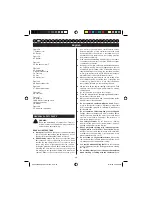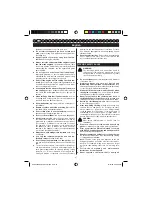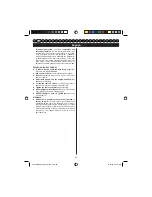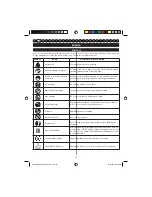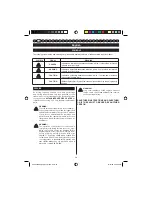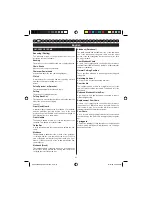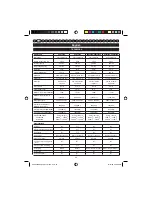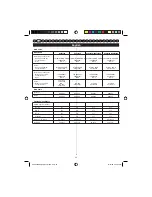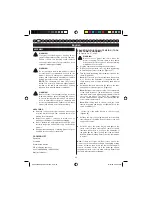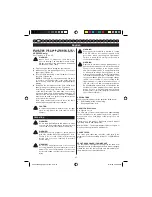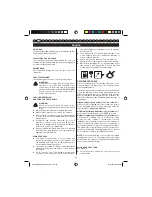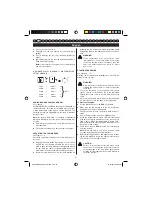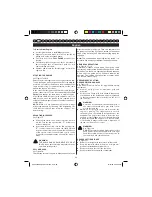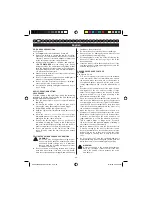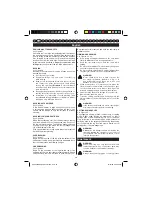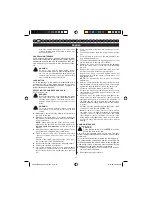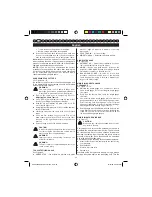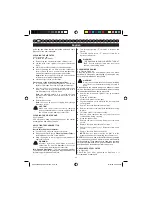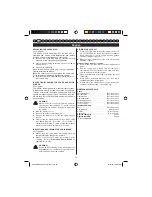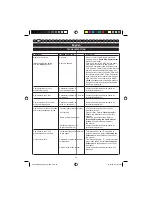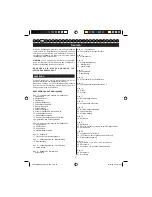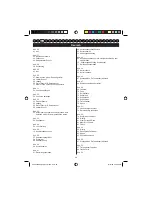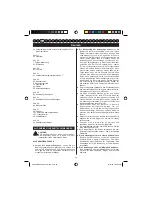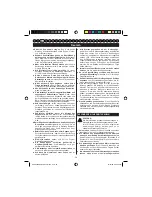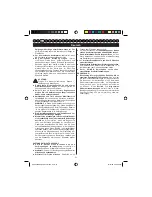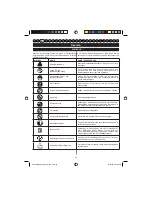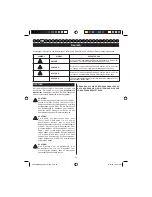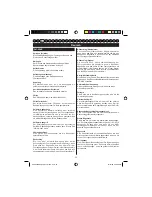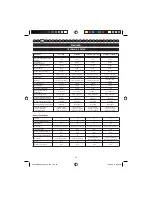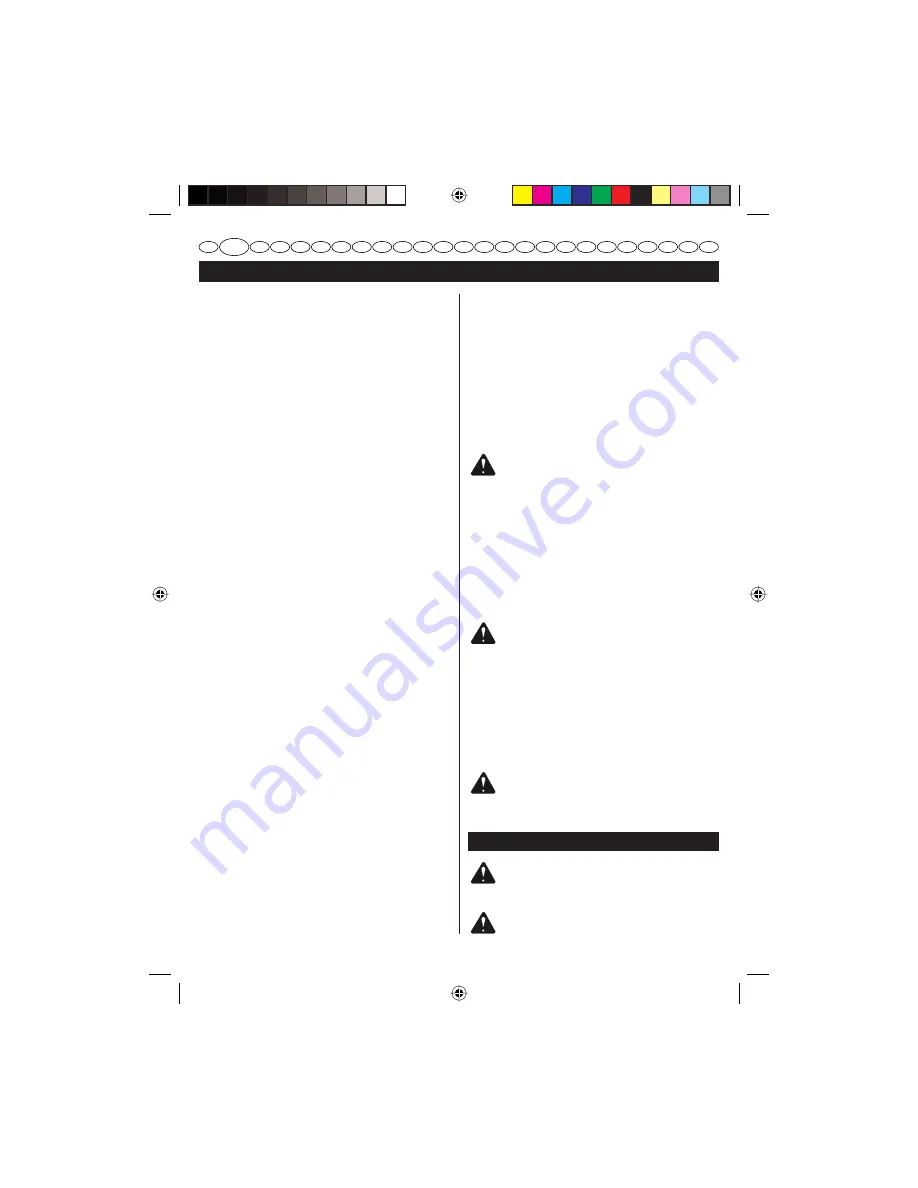
40
English
GB
F
D
E
I
P
NL
S
DK
N
FIN GR
HU
CZ
RU
RO
PL SLO HR
TR EST
LT
LV
SK
BG
REMOVING BUTTRESS ROOTS
See Figure 27.
A buttress root is a large root extending from the trunk of
the tree above the ground. Remove large buttress roots
prior to felling. Make the horizontal cut into the buttress
first, followed by the vertical cut. Remove the resulting
loose section from the work area. Follow the correct tree
felling procedure as stated in
Proper procedure for tree
felling
after you have removed the large buttress roots.
BUCKING
See Figure 28.
Bucking is the term used for cutting a fallen tree to the
desired log length.
■
Cut only one log at a time.
■
Support small logs on a saw horse or another log
while bucking.
■
Keep a clear cutting area. Make sure that no objects
can contact the guide bar nose and chain during
cutting, this can cause
Kickback
. Refer to Kickback
in the Specific Safety Rules section of this manual for
more information.
■
During bucking operations, stand on the uphill side so
that the cut-off section of the log cannot roll over you.
■
Sometimes it is impossible to avoid pinching (with
just standard cutting techniques) or difficult to predict
which way a log will settle when cut.
BUCKING WITH A WEDGE
See Figure 29.
If the wood diameter is large enough for you to insert
a soft bucking wedge without touching the chain, you
should use the wedge to hold the cut open to prevent
pinching.
BUCKING LOGS UNDER STRESS
See Figure 30.
Make the first bucking cut 1/3 of the way through the log
and finish with a 2/3 cut on the opposite side. As you cut
the log, it will tend to bend. The saw can become pinched
or hung in the log if you make the first cut deeper than
1/3 of the diameter of the log.
Give special attention to logs under stress to prevent the
bar and chain from pinching.
OPERATION
OVERBUCKING
See Figure 31.
Begin on the top side of the log with the bottom of the
saw against the log; exert light pressure downward. Note
that the saw will tend to pull away from you.
UNDERBUCKING
See Figure 32.
Begin on the underside of the log with the top of the
saw against the log; exert light pressure upward. During
under bucking, the saw will tend to push back at you.
Be prepared for this reaction and hold the saw firmly to
maintain control.
LIMBING AND PRUNING
See Figures 33 - 34.
■
Work slowly, keeping both hands on the saw with a
firm grip. Maintain secure footing and balance.
■
Keep the tree between you and the chain while
limbing.
■
Do not cut from a ladder. This is extremely dangerous.
Leave this operation for professionals.
■
Do not cut above chest height. A saw held higher than
chest height is difficult to control against kickback.
WARNING:
Never climb into a tree to limb or prune. Do
not stand on ladders, platforms, a log, or in
any position which can cause you to lose your
balance or control of the saw.
■
When pruning trees it is important not to make the
flush cut next to the main limb or trunk until you have
cut off the limb further out to reduce the weight. This
prevents stripping the bark from the main member.
■
Under buck the branch 1/3 through for your first cut.
■
Over buck the branch to drop it.
■
Finish by cutting smoothly and neatly against the
main member so the bark will grow back to seal the
wound.
WARNING:
If the limbs to be pruned are above chest height,
hire a professional to perform the pruning.
CUTTING SPRINGPOLES
See Figure 35.
A springpole is any log, branch, rooted stump, or sapling
which is bent under tension by other wood so that it
springs back if the wood holding it is cut or removed.
On a fallen tree, a rooted stump has a high potential of
springing back to the upright position during the bucking
cut to separate the log from the stump. Watch out for
springpoles — they are dangerous.
WARNING:
Springpoles are dangerous and could strike the
operator, causing the operator to lose control of
the chainsaw. This could result in severe or fatal
injury to the operator.
MAINTENANCE
WARNING:
When servicing, use only identical Homelite
replacement parts. Use of any other parts may
create a hazard or cause product damage.
WARNING:
Always wear safety goggles or safety glasses
HCS3435A-25lgs manual.indd Sec1:40
HCS3435A-25lgs manual.indd Sec1:40
12/19/08 3:08:55 PM
12/19/08 3:08:55 PM

